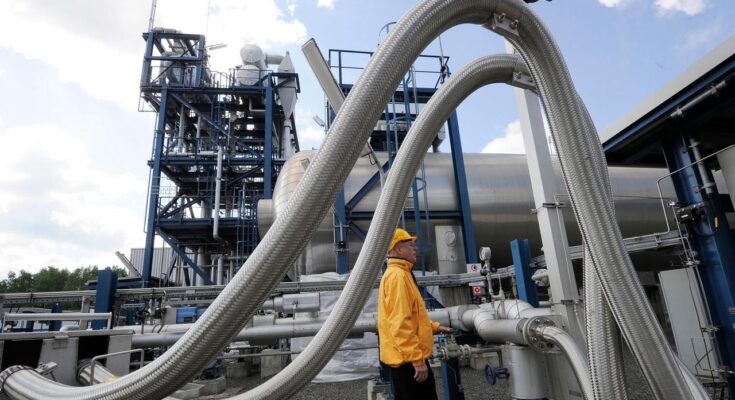The Federal Council has paved the way for storing carbon dioxide underground – for example under the seabed. Supporters see this as an important foundation for climate protection, but opponents criticize the massive effort.
The Federal Council has paved the way for underground CO2 storage in Germany. The Bundestag had previously approved it. Storage technology is now permitted on a larger industrial scale.
Underground CO2 storage is intended to help industries whose CO2 emissions are currently considered unavoidable, such as the cement, lime and aluminum industries.
This law is an important foundation for decarbonization, said Stefan Rouenhoff, State Secretary at the Federal Ministry of Economy, in the Federal Council. The new legal framework is eagerly awaited by the industry, said the CDU politician.
Storage mainly under the seabed
Therefore, the greenhouse gas CO2 should not be released into the atmosphere, but rather captured and then stored permanently in deep geological rock layers.
The law regulates CO2 storage primarily under the seabed – but not in protected areas or near the coast. But there is also a clause that allows individual states to store on land. In addition, a pipeline network will be built so that greenhouse gases can be channeled.
In this way, this technology is intended to help the Federal Republic limit greenhouse gas emissions. Climate-damaging carbon dioxide (CO2) is produced, for example, in industrial factories and when burning oil, gas and coal.
Complicated, expensive, dangerous?
The Federation of German Industry (BDI) describes CO2 storage as essential for the competitive transformation of industry towards climate neutrality.
Environmental groups, on the other hand, expressed criticism. The Carbon Dioxide Storage Law threatens the climate, the economy and the safety of drinking water, the German Federation for the Environment and Nature Conservation (BUND) has warned. The proposed regulations slow the energy transition and even open up new business models for the fossil fuel industry. Rather than avoiding CO2 in the first place, carbon dioxide must be captured at high cost in the future and suppressed using large amounts of energy.



